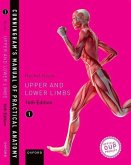Malleable Anatomies offers an account of the early stages of the practice of anatomical modelling in mid-eighteenth-century Italy. It investigates the 'mania' for anatomical displays that swept the Italian peninsula, and traces the fashioning of anatomical models as important social, cultural, and political as well as medical tools. Over the course of the eighteenth century, anatomical specimens offered particularly accurate insights into the inner body. Being coloured, soft, malleable, and often life-size, they promised to foster anatomical knowledge for different audiences in a delightful way. But how did anatomical models and preparations inscribe and mediate bodily knowledge? How did they change the way in which anatomical knowledge was created and communicated? And how did they affect the lives of those involved in their production, display, viewing, and handling? 0Examining the circumstances surrounding the creation and early viewing of anatomical displays in Bologna and Naples, Malleable Anatomiesaddresses these questions by reconstructing how anatomical modelling developed at the intersection of medical discourse, religious ritual, antiquarian and artistic cultures, and Grand Tour display. While doing so, it investigates the development of anatomical modelling in the context of the diverse worlds of visual and material practices that characterized the representation and display of the body in mid-eighteenth-century Italy. Drawing attention to the artisanal dimension of anatomical practice, and to the role of women as both makers and users of anatomical models, it considers how anatomical specimens lay at the centre of a composite world of social interactions, which led to the fashioning of modellers as anatomical celebrities. Moreover, it examines how anatomical displays transformed the proverbially gruesome practice of anatomy into an enthralling experience that engaged audiences' senses.--








